The EG Copenhagen electric bike is a feature rich, fairly well balanced compact electric bike that would be perfect for smaller riders. Not only does it offer an easy-mount step-thru frame design but the smaller 20″ wheels keep the overall frame about three inches closer to the ground than a traditional 26″ wheel would. The fenders, rear rack and LED lights are all useful for commuting or running errands in a variety of conditions and the one year warranty offers some peace of mind. For just over $1,000 this ebike offers a lot of value. I love that it features both pedal assist and trigger throttle drive modes and comes with an upgraded 12 magnet cadence sensor because that helps it activate more smoothly. My only complaints would be the key (which has to remain in when riding and could jingle around), the lack of a suspension fork or seat post shock and the weaker motor. Still, for petite riders the motor should work fine and the overall aesthetic (with integrated wires and matching black components) is great.
The hub motor that drives this bike forward in electric assist and throttle mode is a 250 watt geared hub. That’s a standard size in many European countries but a bit on the small side for the United States where regulation is more relaxed. All things considered, it’s great for relatively flat and smooth terrain and being smaller it actually uses less power and may extend range a bit. Also, given the smaller wheel diameter, the motor benefits from a mechanical advantage that can help with climbing and starting from rest – basically the setup improves torque a bit. Geared motors freewheel without causing any drag and they tend to be smaller which is nice in terms of visuals. I’m not sure which brand of motor is used on the Copenhagen but it produced a bit more noise than some others I’ve tested. Even though the official website says the bike can hit 20 mph, I think this motor will probably more typically go ~18 given its smaller power rating and the wheel size.
Powering the motor is a very generic and standard sized 36 volt 10 amp hour “Silverfish” style battery pack. It’s probably a big contributor to the low price point of this electric bike because the same form factor is used on many ebikes in China. This particular pack has a black exterior which matches the bike perfectly and even includes an LED charge level indicator right on top. It’s relatively easy to get on and off the bike thanks to a flip-up saddle mechanism and removing it will help make the bike lighter for transport. I recommend topping the battery off after each ride or every three months if you haven’t used the bike. It’s also a good idea to store it at neutral temperatures because extreme heat and cold can wear it out faster. The chemistry of the cells in this battery are Lithium-ion which is relatively light and long lasting. So even though this pack is very “ordinary” in my opinion it’s a great choice and one that could probably be replaced down the line (either from EG or just by searching online). The exterior of the pack is made from an aluminum alloy on the sides and plastic caps at the top and bottom. It feels pretty sturdy and I like the little handle at the top because it makes carrying a bit easier and less risky.
Activating the EG Copenhagen is pretty straight forward. Once the battery has been charged up you just slide it onto the frame (I like that the seat stays surround it for protection) and then you twist the key to “on” at which point the LED display on the left bar will light up. From here, you can read a basic charge level indicator that shows four dots. As you use the bike, these dots will turn off and once you get down to one it’s probably a good idea to charge the pack up again. Just below the charge readout are three more red LED dots that show which level of pedal assist the bike is set to (Low, Med or High). The lower two levels will drain the battery charge more slowly but won’t feel as zippy and might not climb as well. Still, any pedal assist will be more efficient than the throttle which is designed to be used at any time. Rather than a twist throttle, this bike uses a trigger which stays out of the way on the right bar and keeps the cockpit clean in my opinion. I like that EG has included ergonomic grips with this bike but they are super low-end and very hard (almost like plastic) which might not be as comfortable if the road is very bumpy and the bike is vibrating a lot.
So, the story of the EG Copenhagen is that it’s a higher end “value” electric bike that’s great for shorter riders. I had a blast cruising around on my test rides and didn’t feel as much concern for the motor, battery or gearing quality as some other affordable electric bikes. With a seven speed Shimano Acera derailleur you should be fine around town and even up medium hills. The 12 magnet cadence sensor, derailleur guard, aluminum bash guard, integrated cables, well protected controller box (just under the rear rack and above the fender) and adjustable stem are nice touches that keep the bike tough but are seamlessly integrated. It would be nice if the LEd lights ran off of the main battery instead of using disposable (or rechargeable) cells and a seat post suspension would be nice but for the price, it’s hard to complain here. This is a solid ebike from a company that has been around for several years now and is becoming more widely available through shops. In fact, that’s one of the challenges with this model, it can be difficult to find and doesn’t seem to be available online.
Pros:
- Very easy to mount thanks to the step-thru frame design and smaller 20″ wheels which position the frame closer to the ground
- Comfortable, fairly upright riding position with a padded gel seat to absorb bumps and adjustable angle stem to dial in fit
- Great value at just over $1,000 and the aesthetic is clean (wires run through frame, controller box hidden under rear rack, battery mounted behind tubing)
- The smaller motor is fairly efficient, offering good range, and it benefits from the smaller wheel size to offer more torque for climbing
- Independent LED lights and fenders add safety at night or in the rain and the standard sized rear rack could be very useful for commuting
- Decent seven speed Shimano Acera drivetrain with stiff aluminum alloy pedals for stiffness and traction
- Sturdy but somewhat confusing locking rear kickstand (you have to press the release switch with your foot to unlock it)
- Locking removable battery pack can be charged separately from the bike and also makes the bike easier to move (lighter weight) when taken off
Cons:
- No suspension fork or seat post shock means you feel the bumps more, the smaller diameter wheels also don’t roll over cracks quite as smoothly
- Not as easy to find and test ride at dealers, limited distribution at this time (based on what I have seen while traveling)
- Smaller 250 watt motor might not be enough for larger riders or those with lots of hills and rigorous terrain
- More basic hardware including the SIS thumb shifter, no bottle cage mount and no quick release on the rear wheel meaning it takes tools and a bit more time/energy to service
- Only available in one frame style (step-thru) which isn’t as stiff as a diamond frame, one size (medium) and two standard colors (white and light blue)
- They key has to remain in the ignition slot on the battery pack in order to operate the bike, this means it could jingle around when riding or get caught on stuff more easily
Resources:
- Official Site: http://www.egbike.com/EGUSA/index_files/Page1265.htm
- More Pictures: https://goo.gl/photos/E1XowGFMydo1jitz6

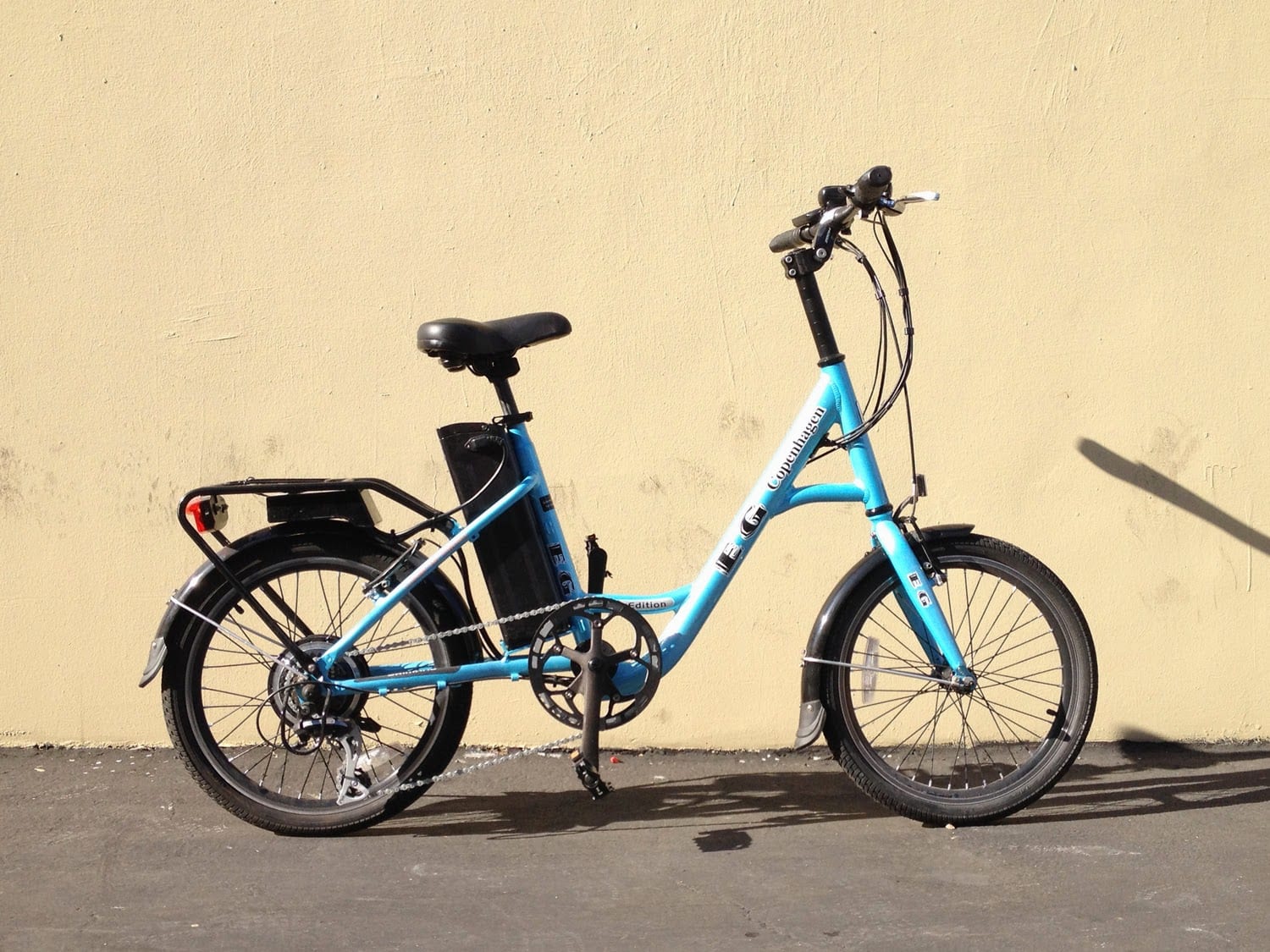
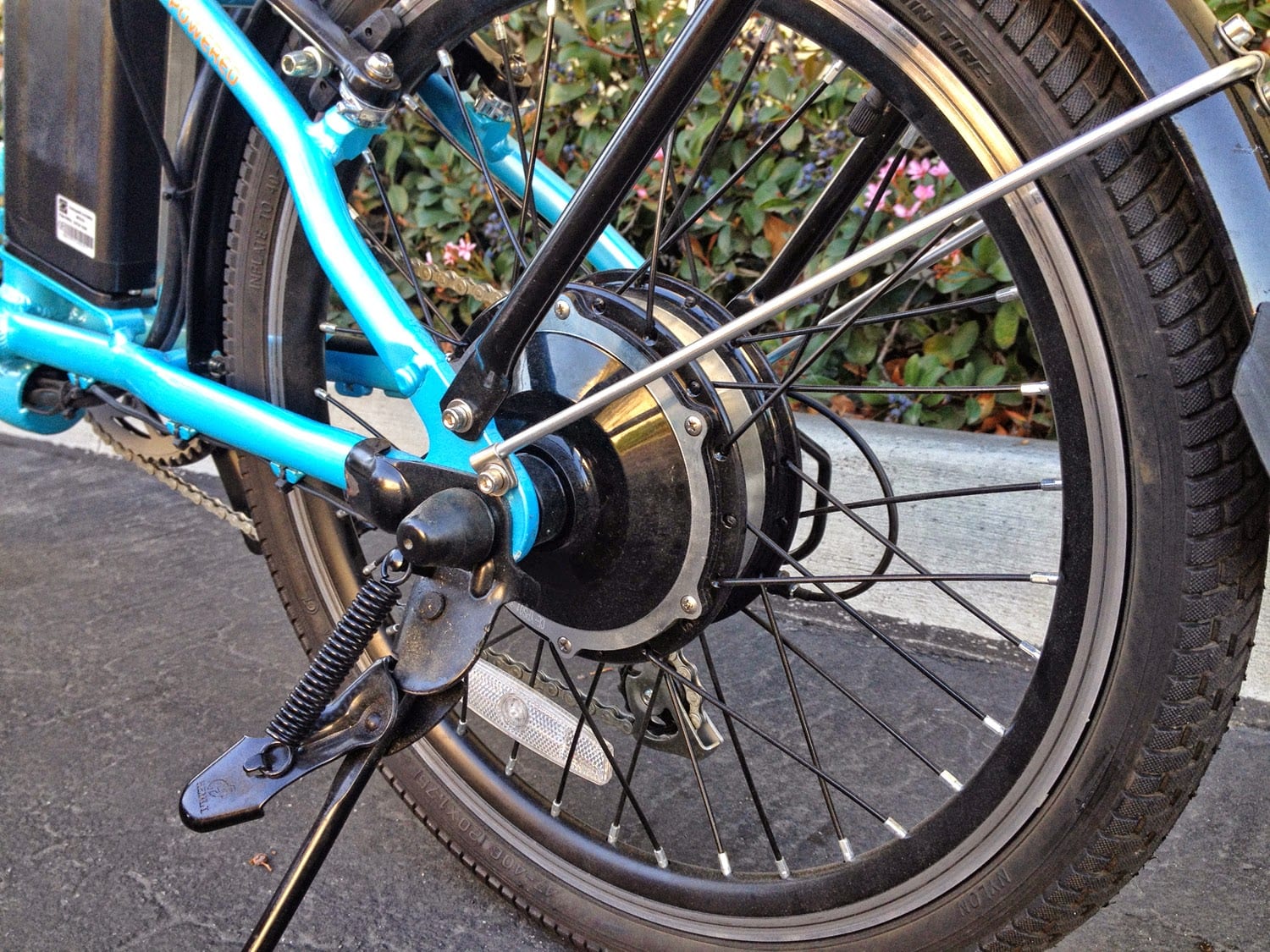
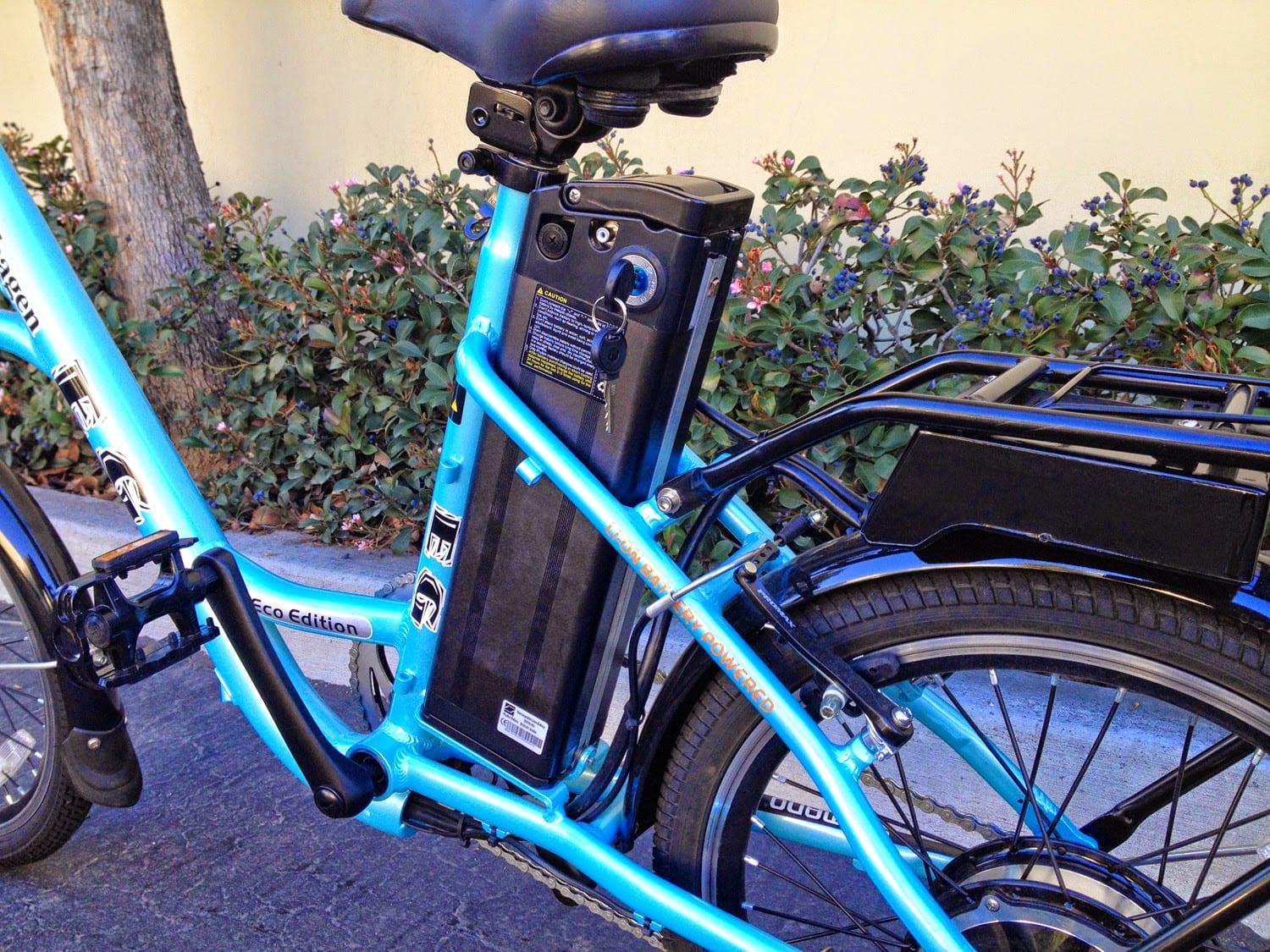
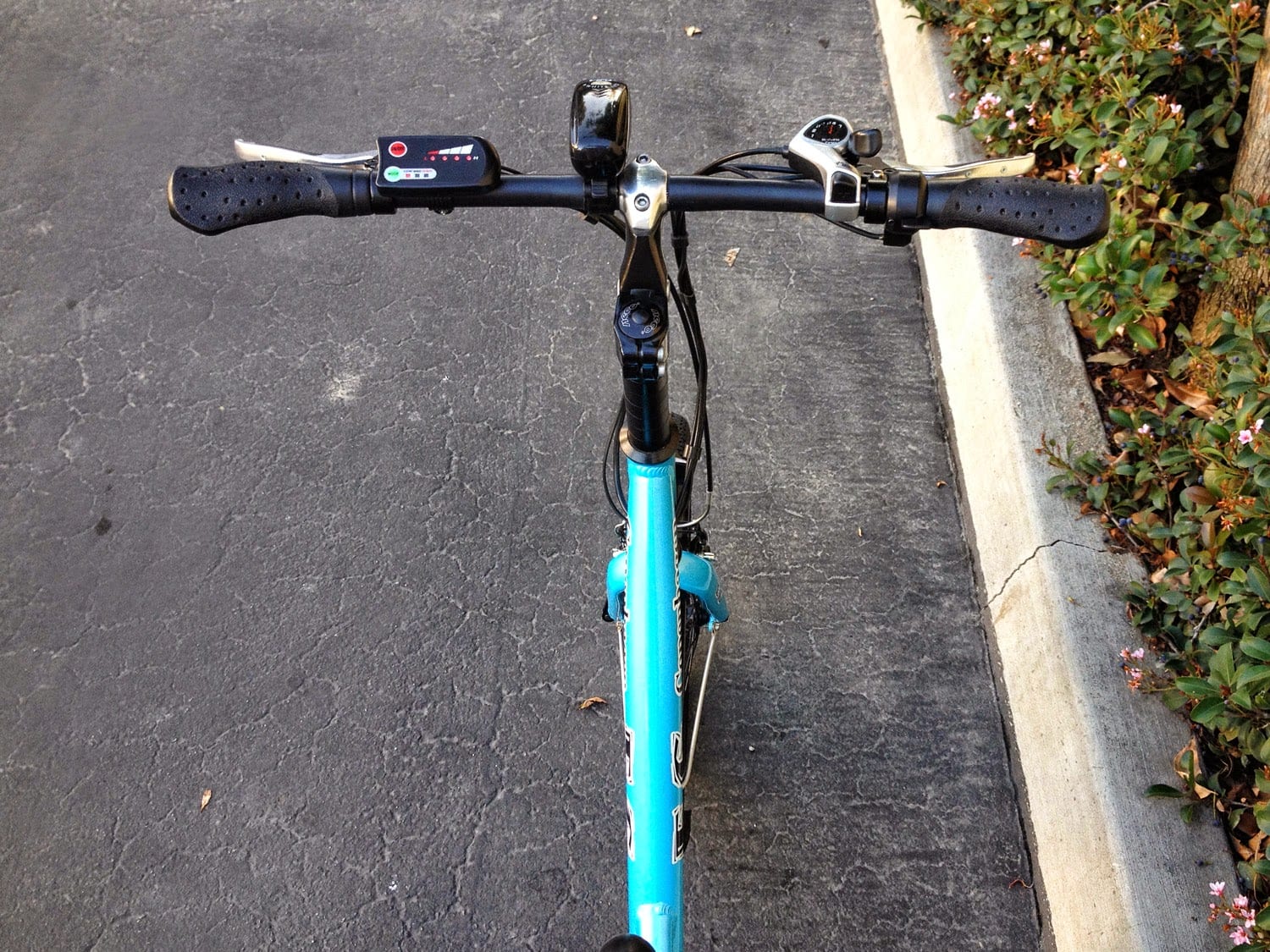
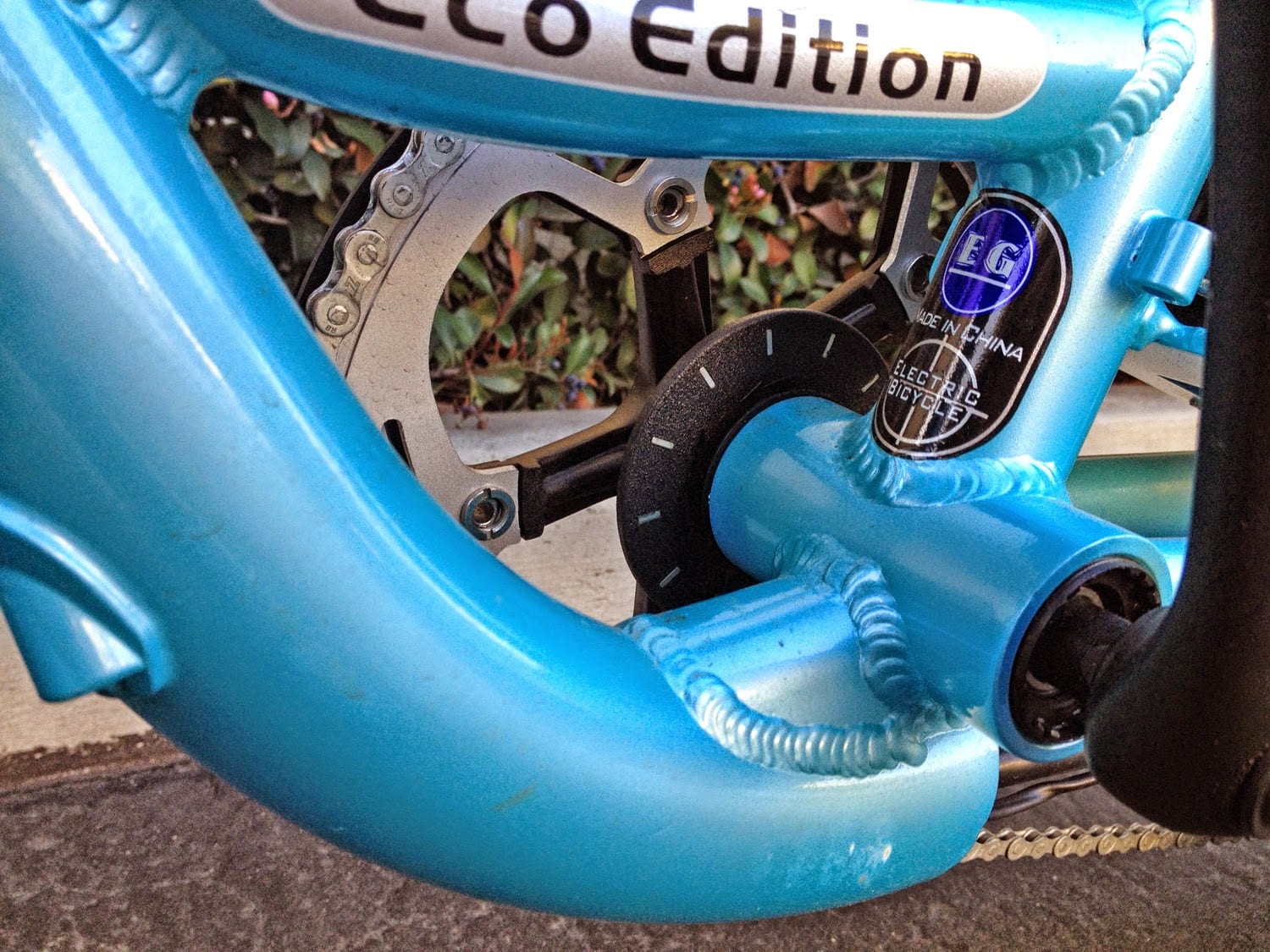
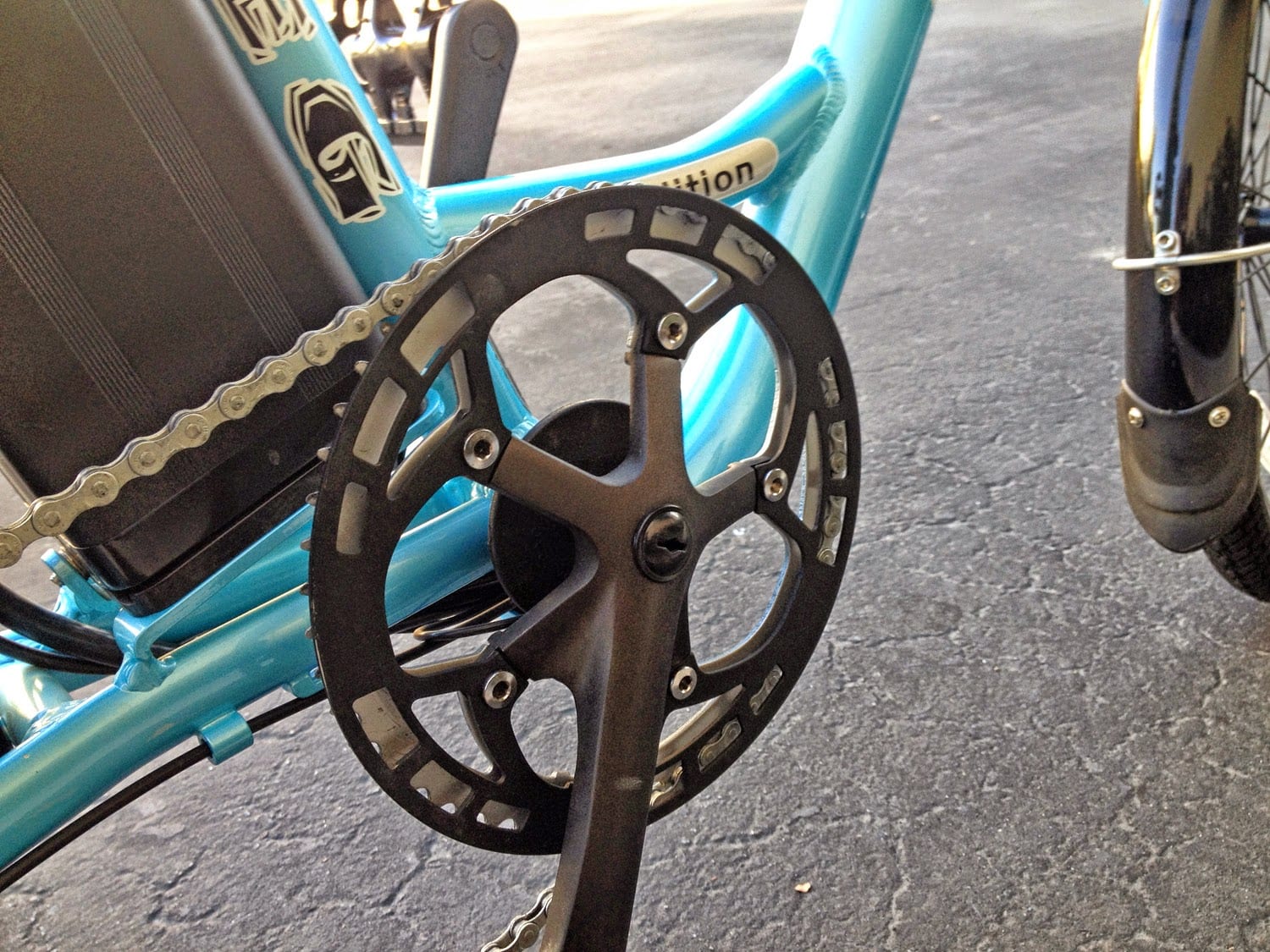
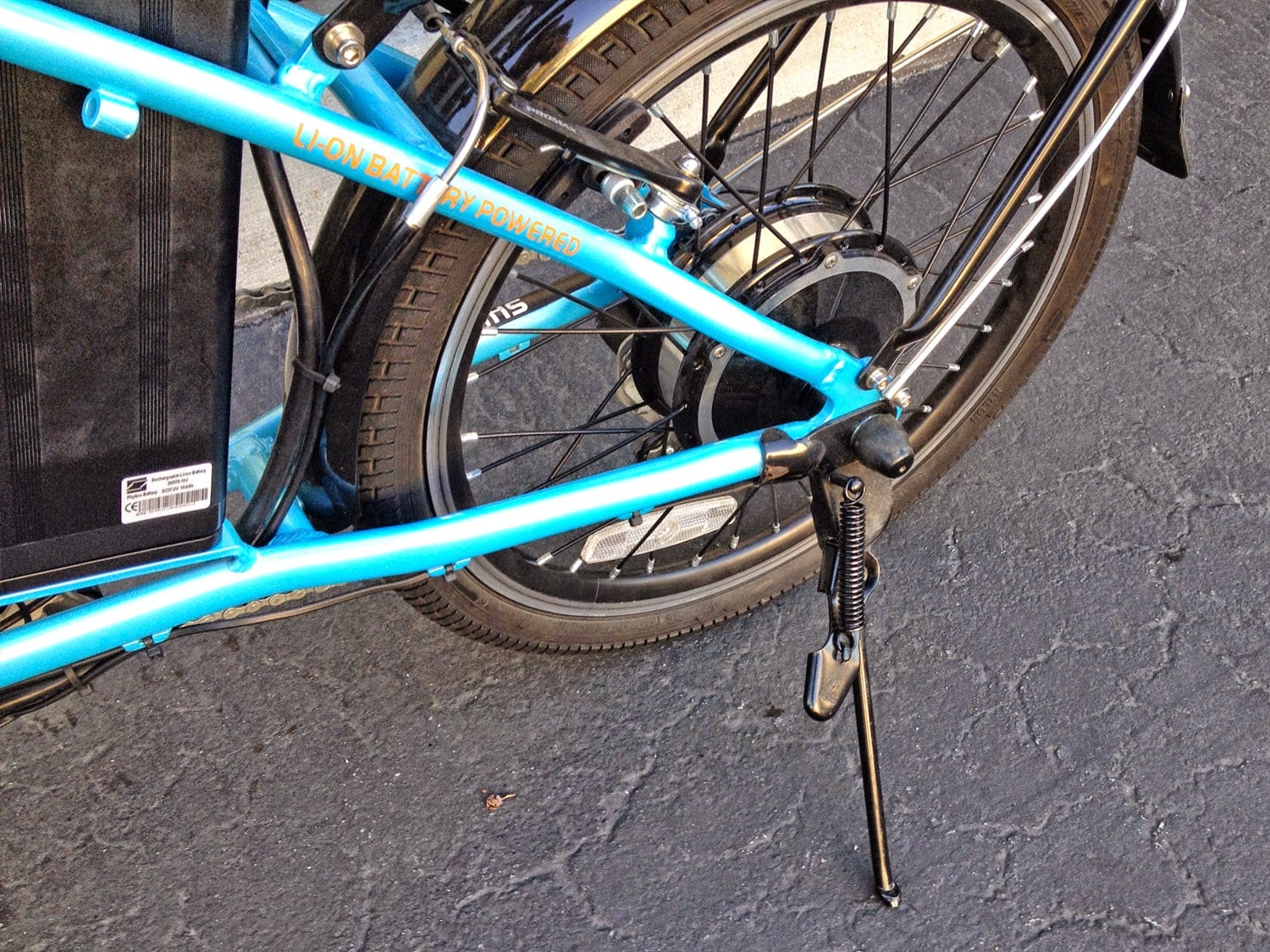
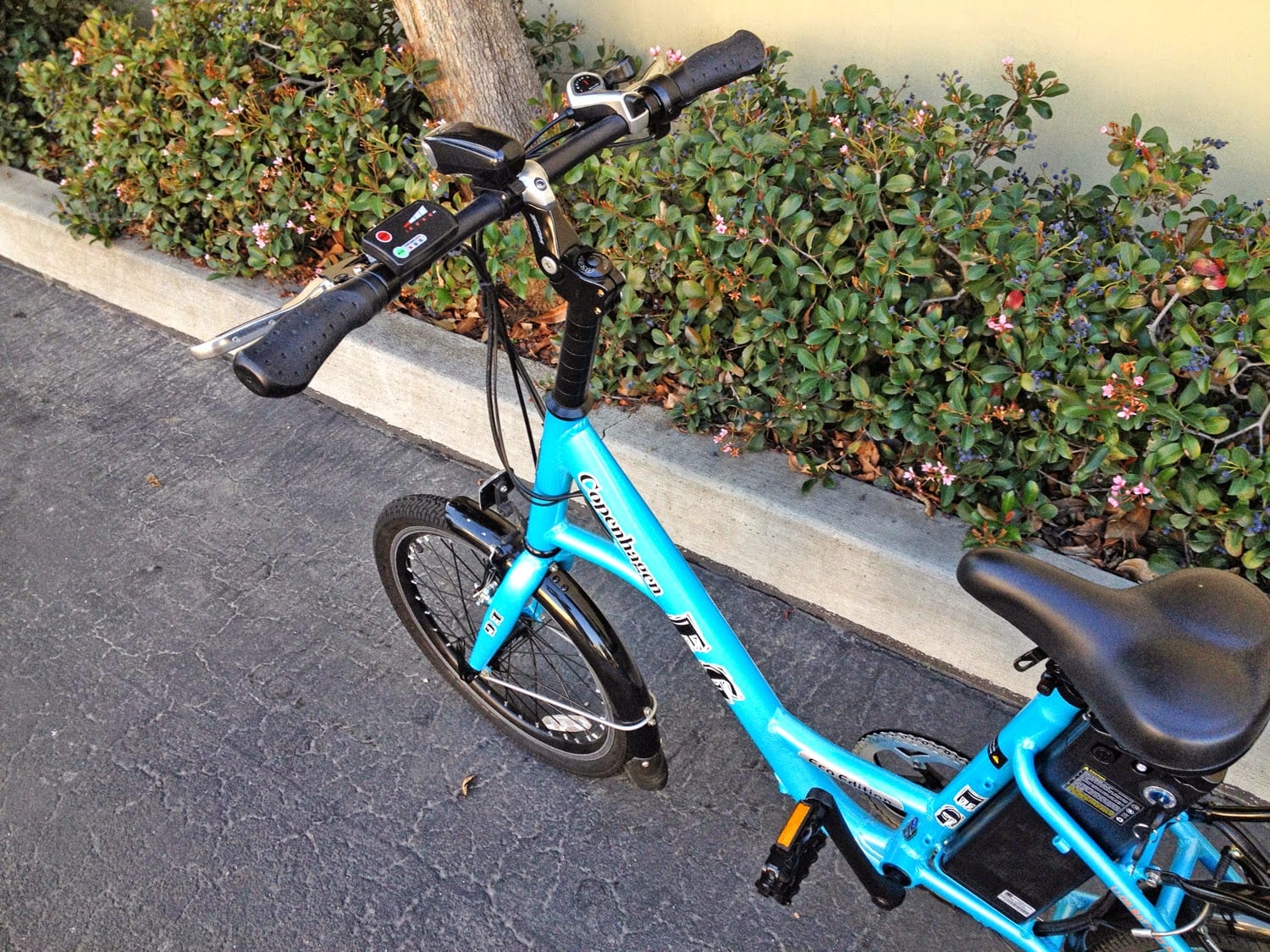
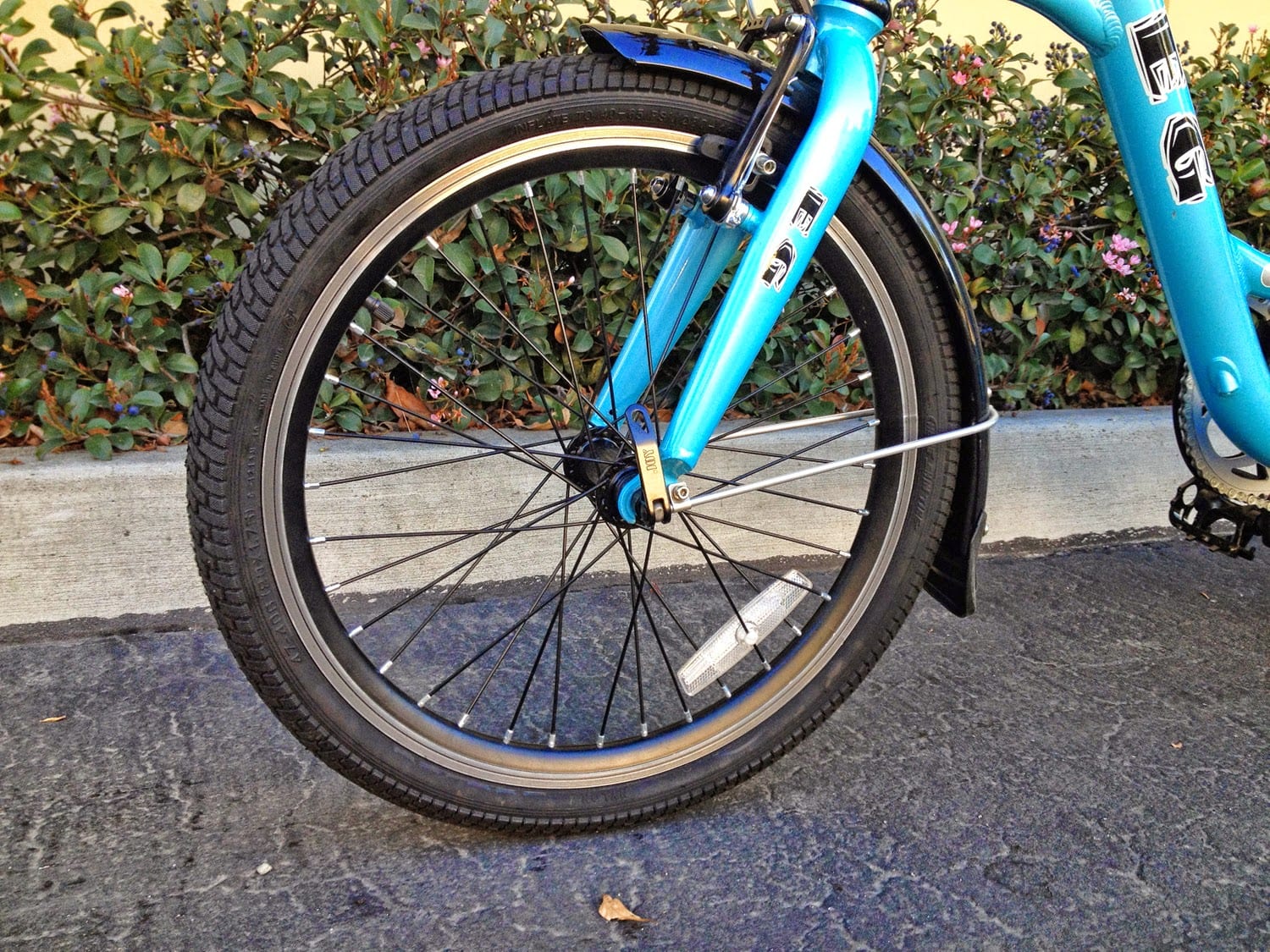
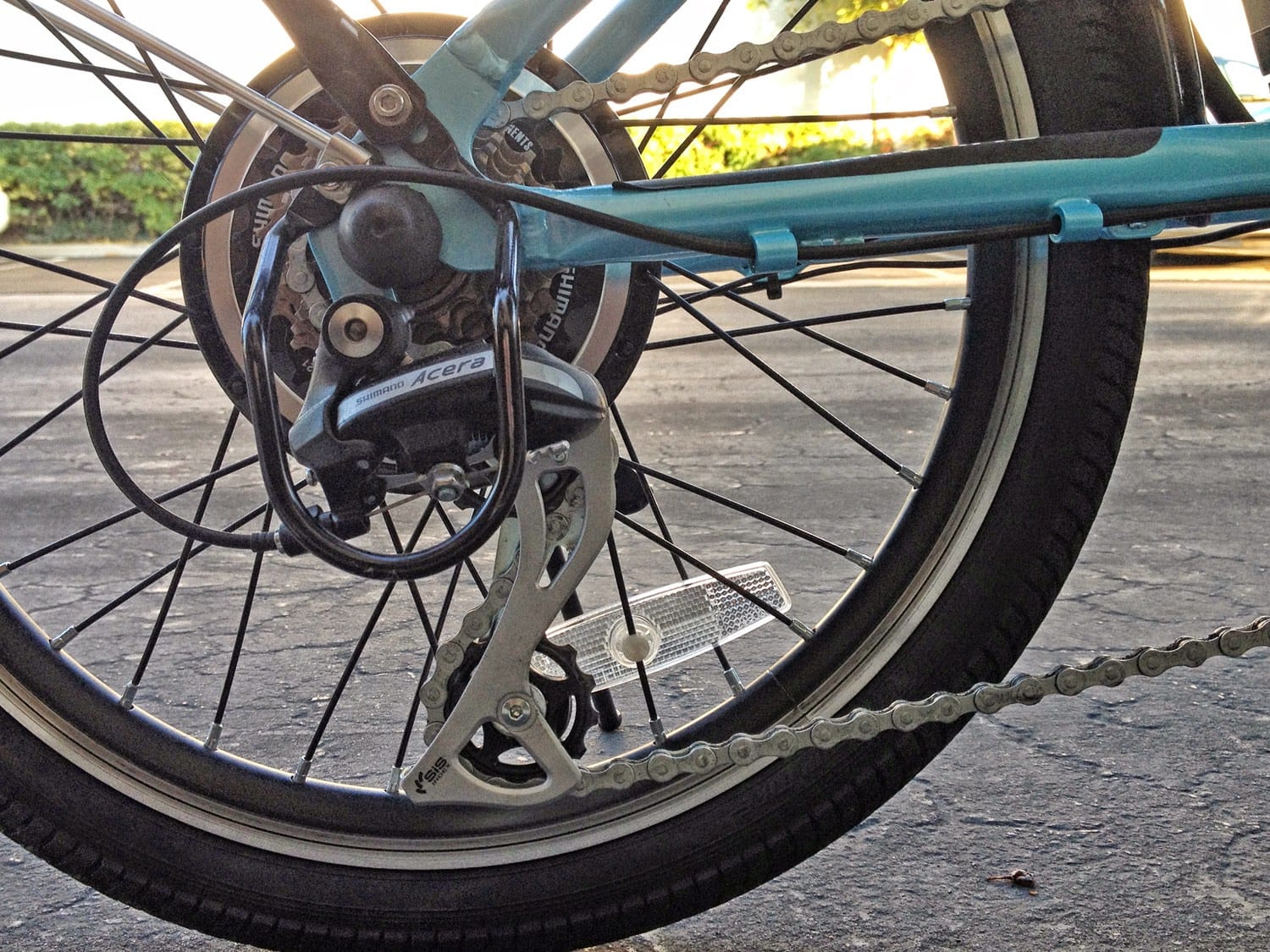



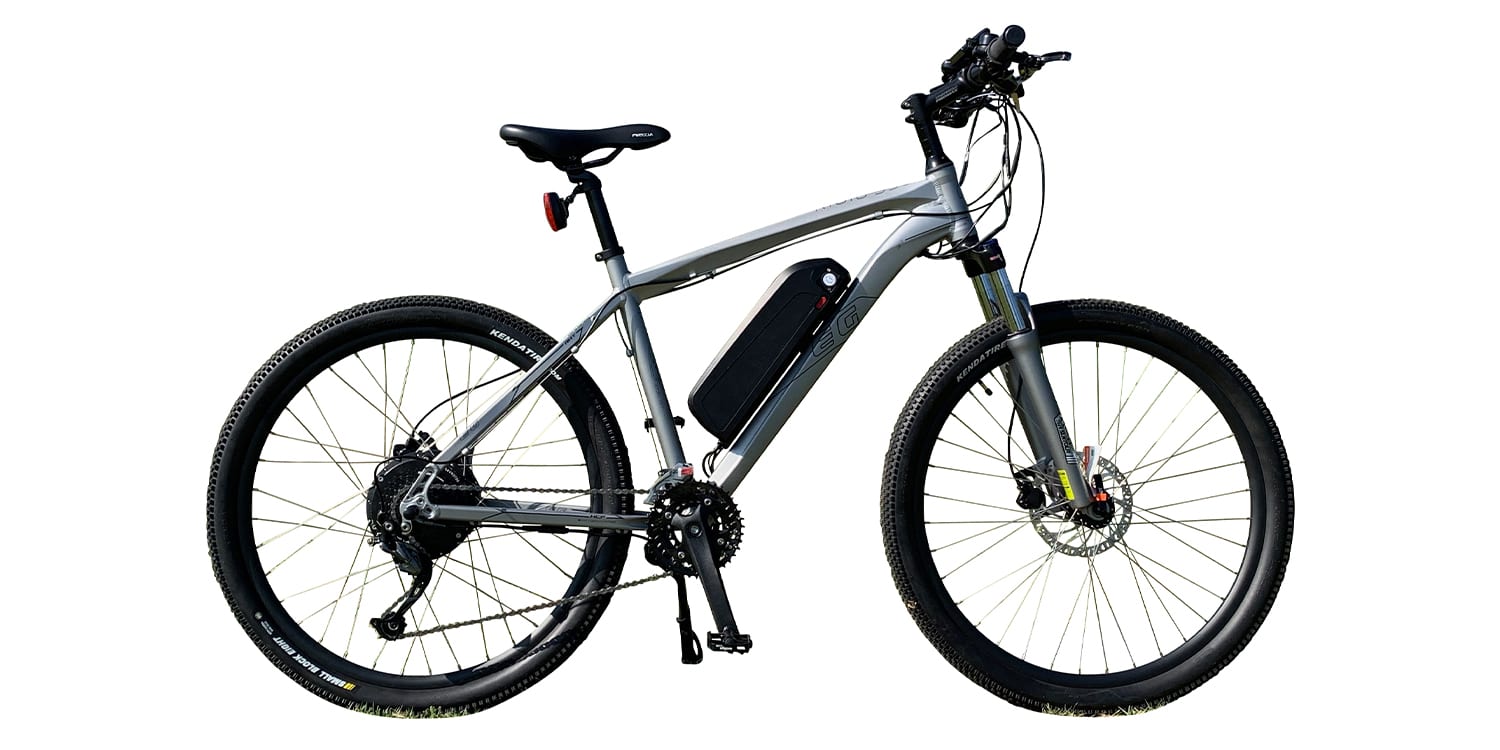

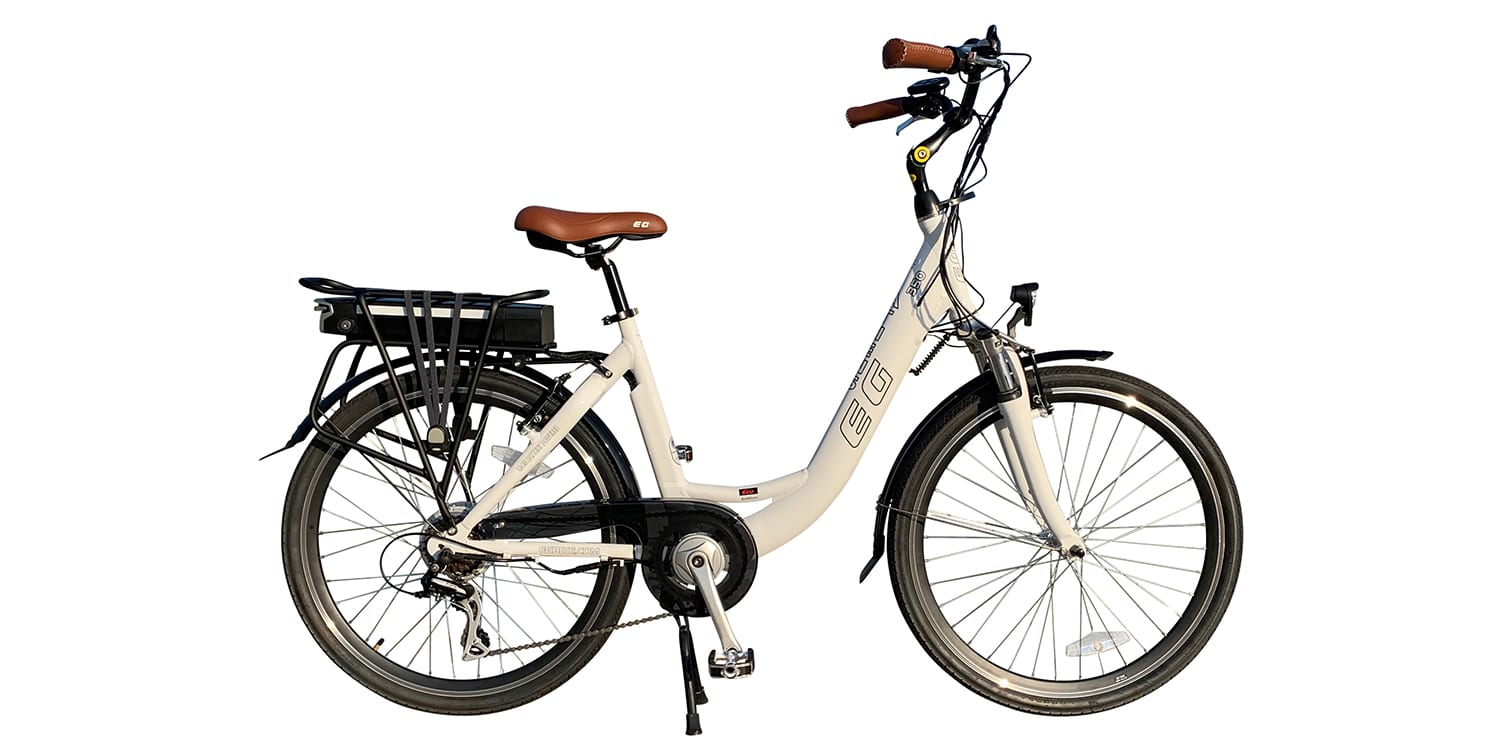
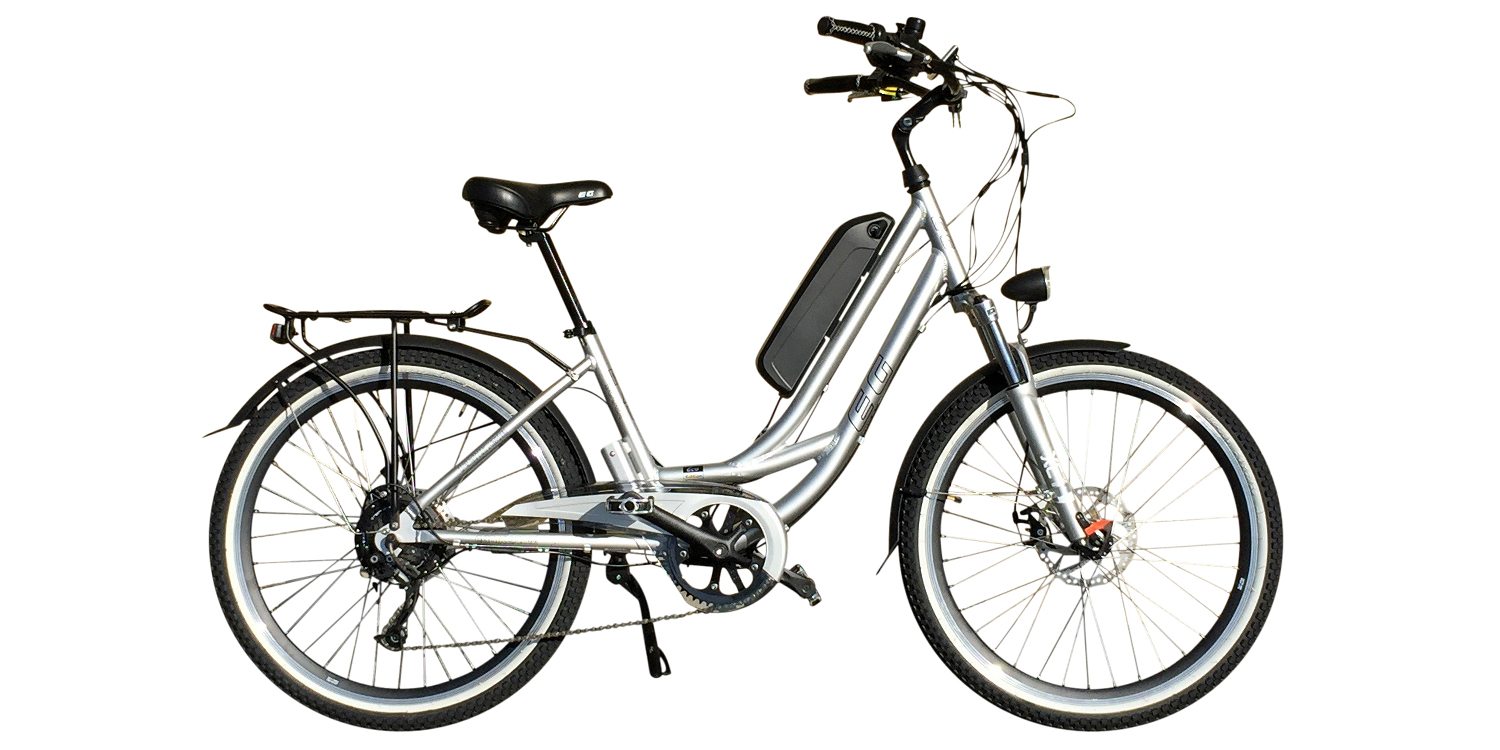
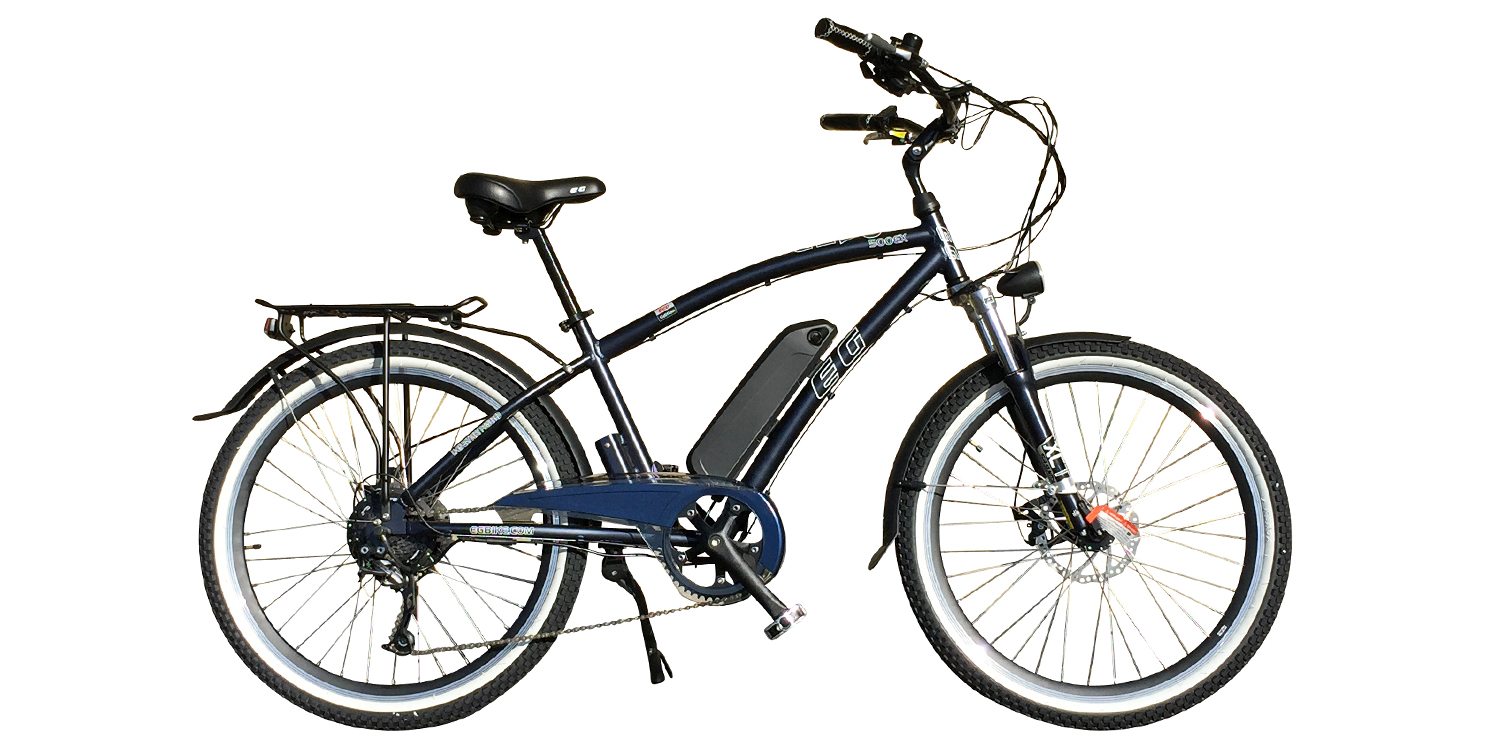
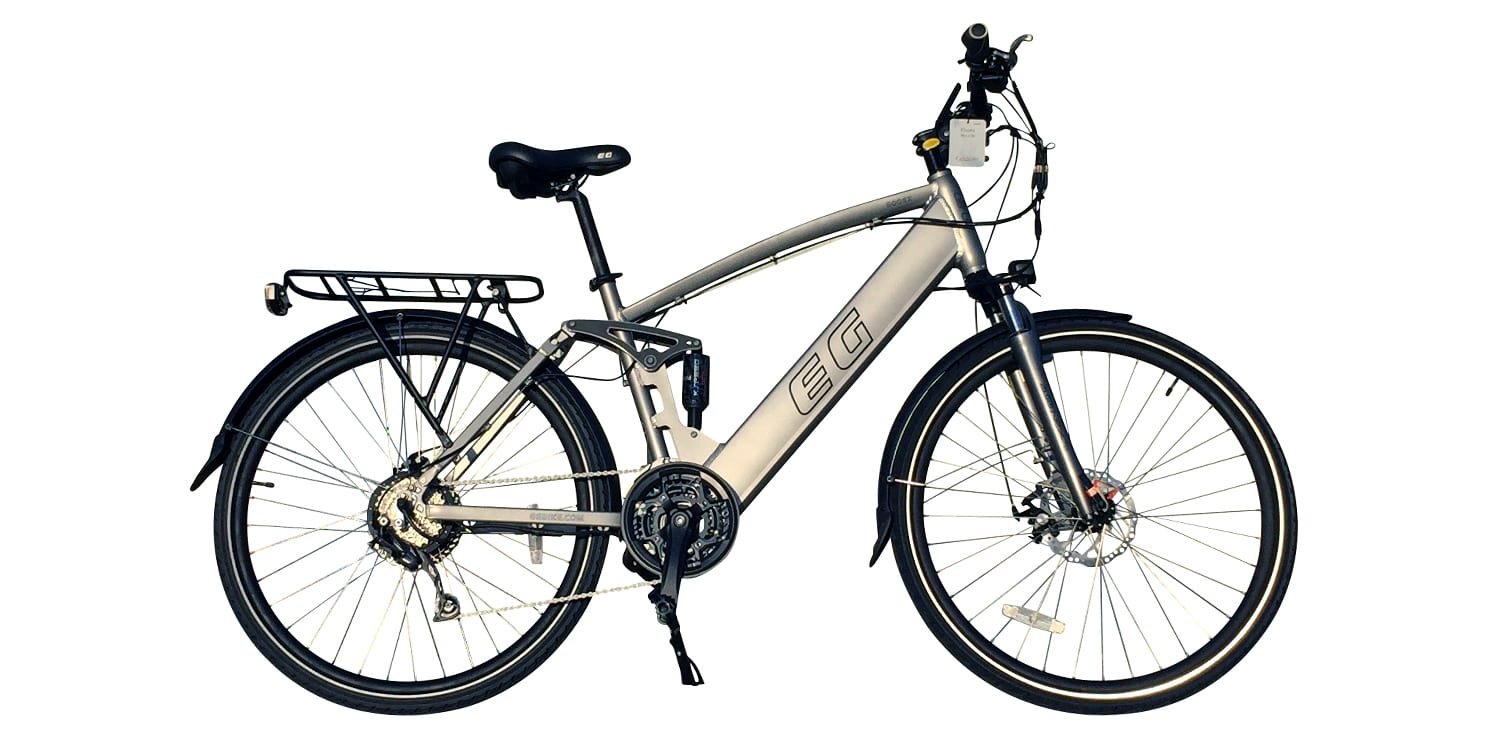

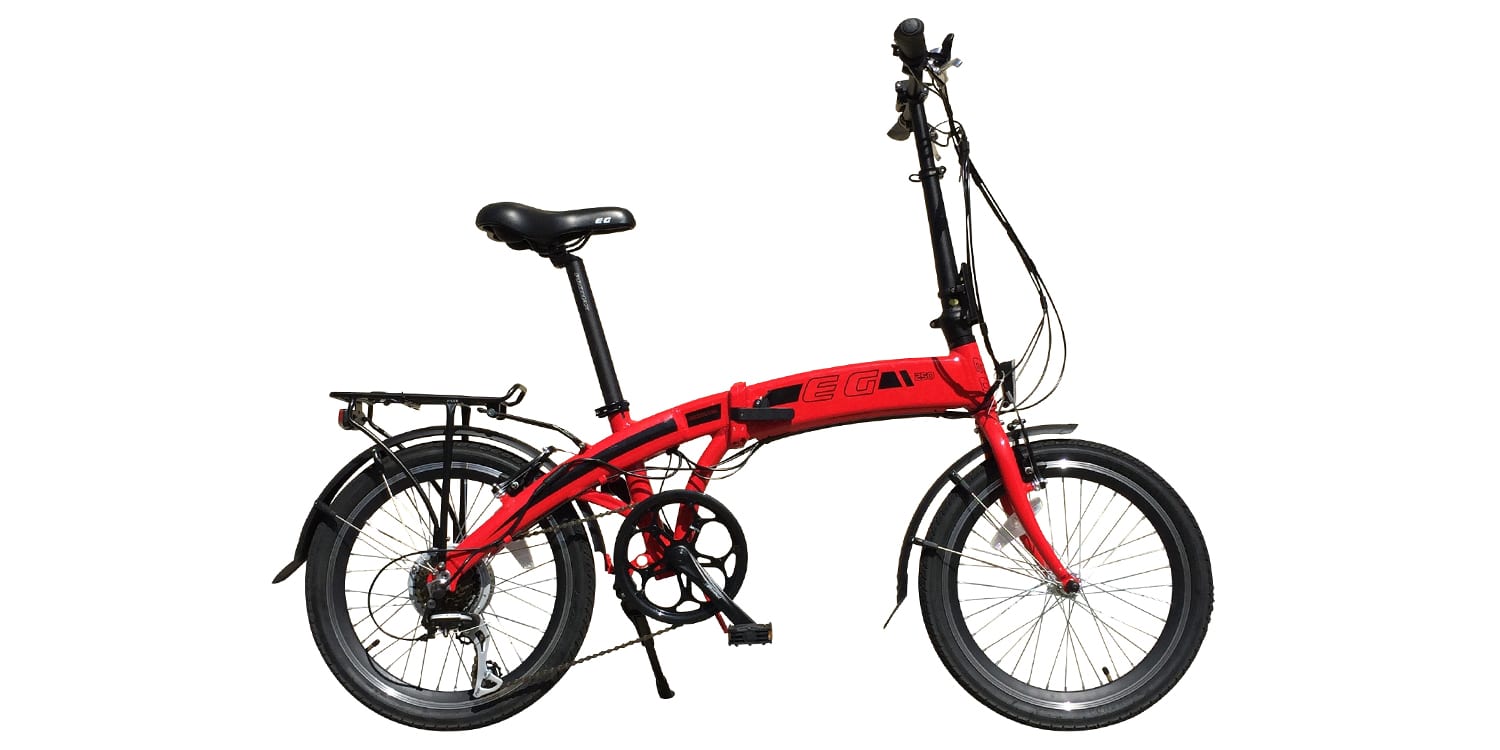

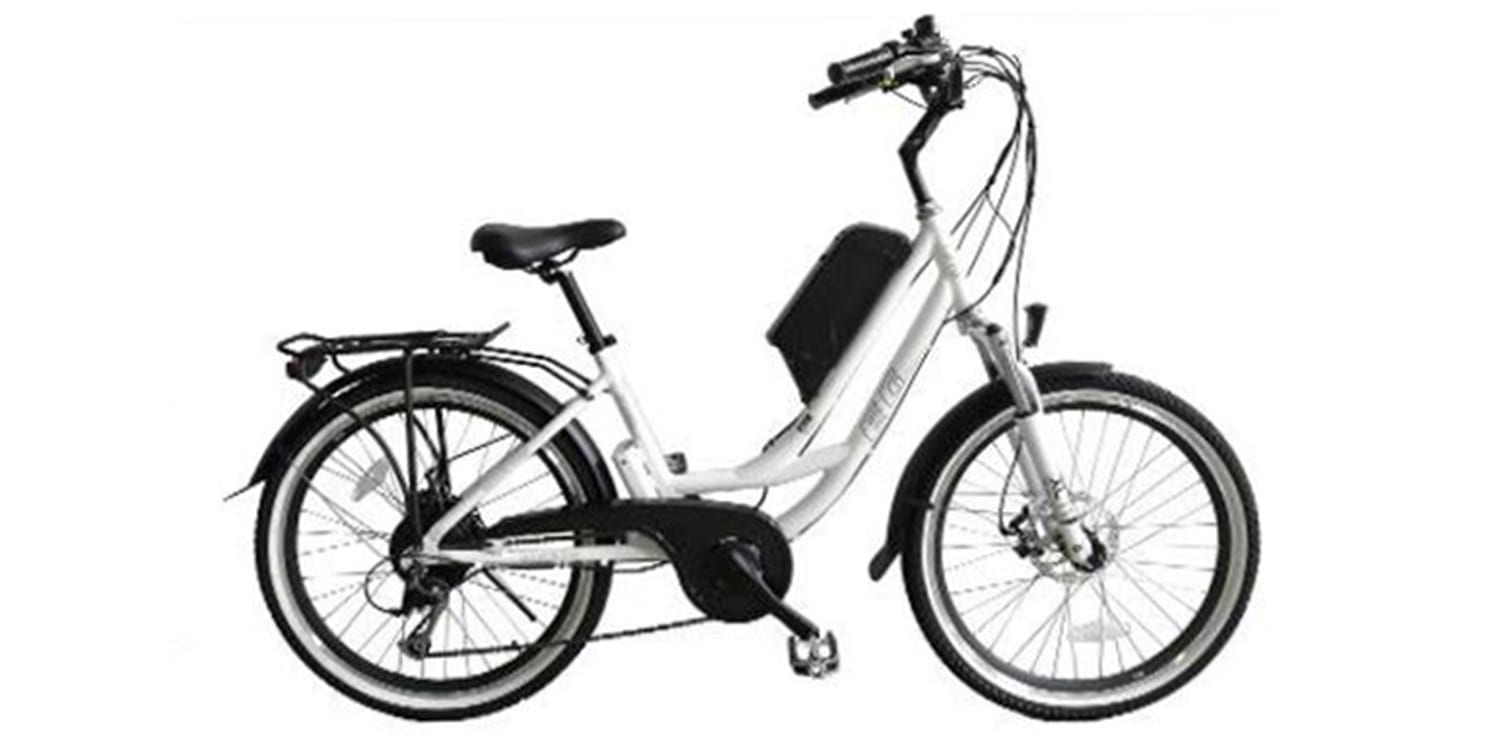
Reader Interactions